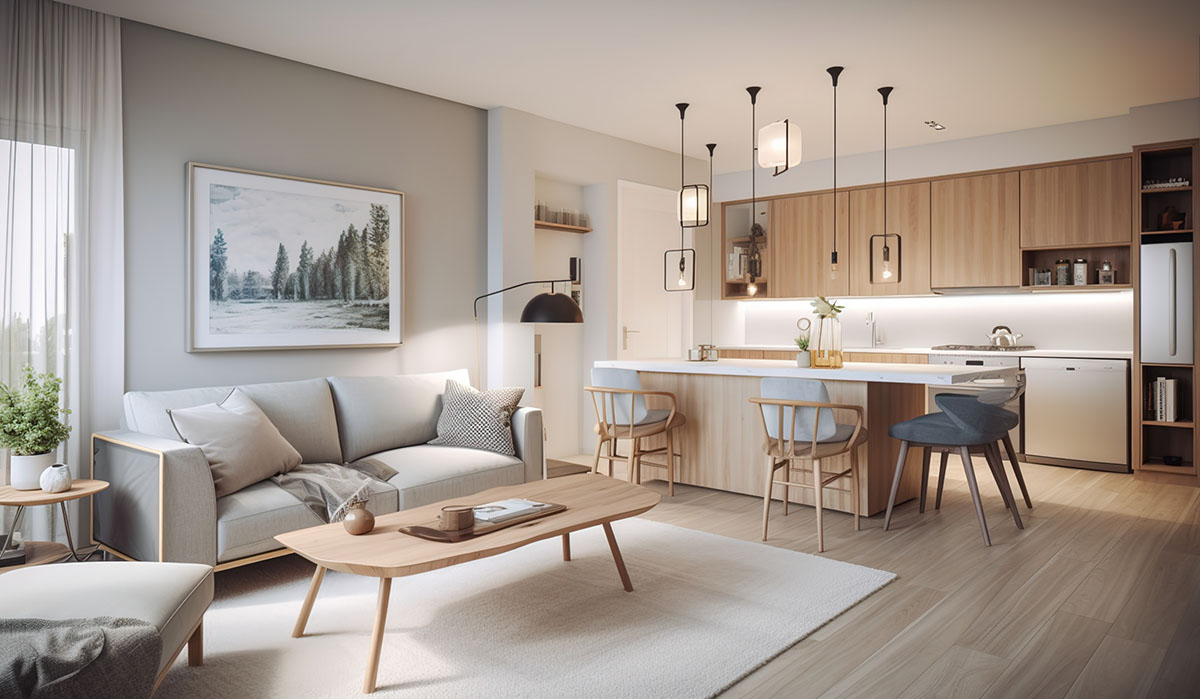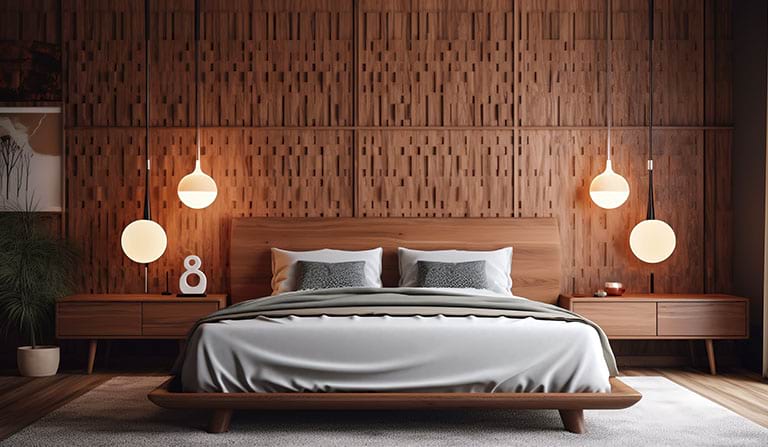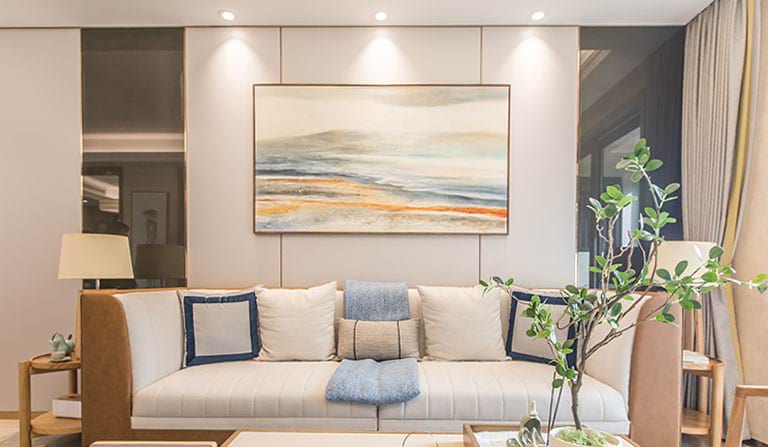Exploring the Four Types of Lighting and Principles for Choosing the Best Lighting
There are four types of lighting to consider when discussing lighting. Every category serves specific functions, hence it is not possible to determine a superior option among them.
Four Types of Lighting:
Ambient
The term “ambient” or “general” light refers to any illumination that fills a room with a consistent amount of light. This includes both natural light and artificial ambient lighting, such as chandeliers, ceiling lights, table lamps, track lights, recessed lights, and wall-mounted fixtures. It is important that ambient light be evenly distributed throughout a space.
The main objectives of ambient lighting are to brighten up a space as a whole and eradicate any dim spots or shadows. This type of lighting is generally not direct and instead diffuses or reflects the light throughout the room. However, it can also be focused on a specific object or area. Ambient lighting is not ideal for task completion due to its usual inefficiency.
Task
Artificial light that assists in task completion is known as task lighting. Generally, this kind of lighting is direct in nature. Various types of lighting solutions fall under this category, such as floor, table, and desk lamps (including magnification ones), wall-mounted lights with a swing arm, adjustable task lights, hanging pendants, wall sconces, downlights (including recessed lighting), and light strips. Adjustable options are specifically helpful as they can be concealed when not in use or effectively eradicate shadows on your work by adjusting the angle.
Accent
Accent lighting serves the same purpose as task lighting, as it illuminates specific objects like artwork or pictures, using focused light. Strip lights, directional recessed lighting, track lights, and wall lights are all practical choices for accent lighting. No information has been excluded from the original text.
Decorative
After discussing the first three types of lighting, the concept of decorative lighting comes into play. This type of lighting is focused on enhancing the visual appeal of a room by utilizing both attractive fixtures and appropriate lighting techniques. It can include ambient, task, and accent lighting, which all work together to create a decorative effect. One way to achieve this is by using light decorations in living rooms, which we particularly enjoy. No information from the original text has been omitted in the paraphrased version.
What types of lighting work best in a living room?
The term “best” is subjective and influenced by individual taste and particular defining criteria.
Individuals’ Subjective Choice
While personal preference is subjective, it plays a crucial role in discovering the optimal solutions. If an individual is dissatisfied with something, it is evident that it is not the best option for them. For instance, some individuals wonder how to illuminate a living room without an overhead light, which may not be suitable for ceiling light enthusiasts who seek ways to achieve good lighting in their living space.
Three key principles must be considered.
Principle 1: When considering lighting needs, it is important to determine the appropriate quantity and arrangement of lights.
Although online tools can be helpful in determining the precise number of lights needed, the final decision should be based on how the lights actually affect the room and whether they meet your personal preferences. The specific principles outlined below will determine how the lights should be distributed. No information has been omitted in this paraphrased text.
Principle 2: What is the specific type and does it serves a particular purpose?
It is important to select each light considering its intended purpose. While ceiling lights like chandeliers, pendants, and recessed fixtures are commonly used for ambient lighting, there are other options available. Natural light from windows, as well as floor and table lamps, wall sconces, LED strips, string lights, portable lights, lanterns, spotlights, or a combination of these sources can also be used instead of ceiling lights. However, if you need focused lighting, it is recommended to opt for lamps, adjustable task lights, wall sconces, downlights, track lights, or light strips.
Principle 3: The design of your lighting, along with relevant attributes.
Selecting a lighting style plays a crucial role in achieving the desired lighting effect. The most popular styles include traditional/classical, neoclassical, modern/contemporary, industrial, geometric, oversized, and unique. Currently, oversized lighting and blending different styles are increasing in popularity. However, if you opt for the latter, it is important to seek honest feedback before making a final decision. It is essential to consider the warmth, intensity, brightness, and color of your lights as they significantly impact the ambiance of a room.




Leave a comment
You must be logged in to post a comment.